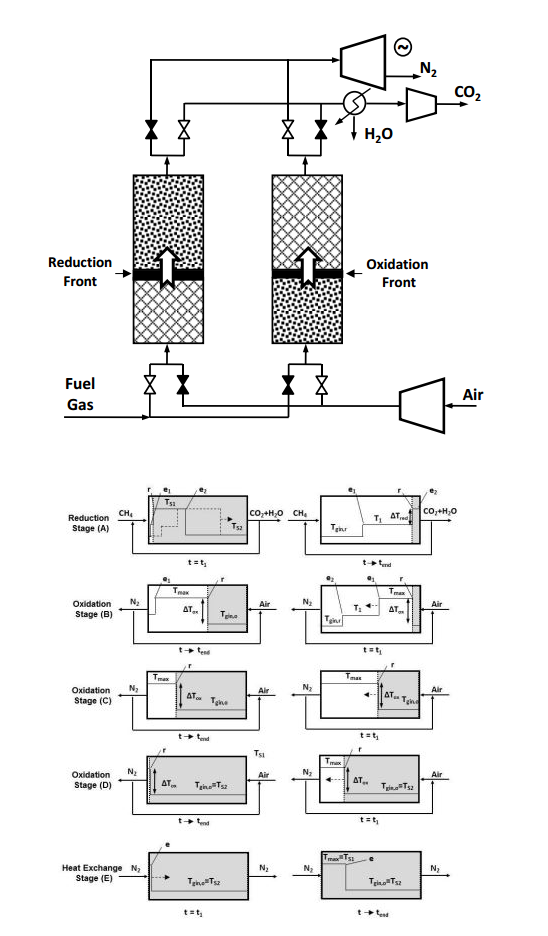Research Article | Published 16 March 2019
José Ramón Fernández
Spanish Research Council, INCAR-CSIC. C/ Francisco Pintado Fe, 26, 33011, Oviedo, Spain.
A process scheme based on fixed-bed reactors is presented as a possible alternative for carrying out the chemical looping combustion of methane at high pressure with gas recycles suitable for controlling the gradients of temperature in the beds. This process is designed to exploit the advantages of the Ni/NiO redox system for chemical looping combustion applications by providing a good reactivity, a high O2 carrying capacity and also chemical and thermal stability. The oxygen carrier, which is stationary, is alternately exposed to reducing and oxidizing atmospheres by means of the periodic switching of the gas feeds (fuel gas and air, respectively). Simple reactor models designed to quantify the temperature profiles during the reaction stages of the process reveal that the increase in temperature in the Ni oxidation fronts can be moderated by introducing cooled nitrogen recycles into the oxidation stages of the process. In these conditions, oxygen carriers with a higher Ni content (around 60 wt.%)can be used, to allow more compact reactor designs. Moreover, the ability to control the displacement of the reaction and heat exchange fronts enables the reduction stage to be initiated with a lower fraction of solids at high temperature. Consequently, a larger proportion of the heat generated during the Ni oxidation stages can be used for power generation by expanding the high temperature pressurized N2 in a gas turbine. A sequence of five stages is shown to be necessary to facilitate the redox reactions and satisfy the energy requirements of the process. The basic design an the thermal integration of this configuration for 10 kg/s of methane (around 500 MWth) is discussed and reasonable operating conditions for the reactors are proposed. A minimum duration of about 10 minutes is considered to be sufficient time for each stage of the CLC process to be completed. A minimum L/D ratio of about 1.7 and a maximum pressure drop of about 10% are assumed for the process to be successfully carried out using 6 reactors, 7 m long with an inner diameter of 4 m. About 55% of energy efficiency with 98% of CO2 capture efficiency have been calculated, which means only 3.5 points of energy penalty compared to a natural gas combined cycle without CO2 capture. These results confirm the potential of this novel process as a future power generation system with near zero CO2 emissions.
Keywords:
CO2 capture; chemical looping combustion; fixed-bed reactors; nickel; methane; thermal integration

MESFORD Publisher Inc is a premier global publisher of science, technology and medical resources. We offer unique, trusted content by expert authors, spreading knowledge and promoting discovery worldwide. We aim to broaden thinking and advance understanding in the sciences, providing researchers, academics, professionals, and students with the tools they need to share ideas and realize their potential
